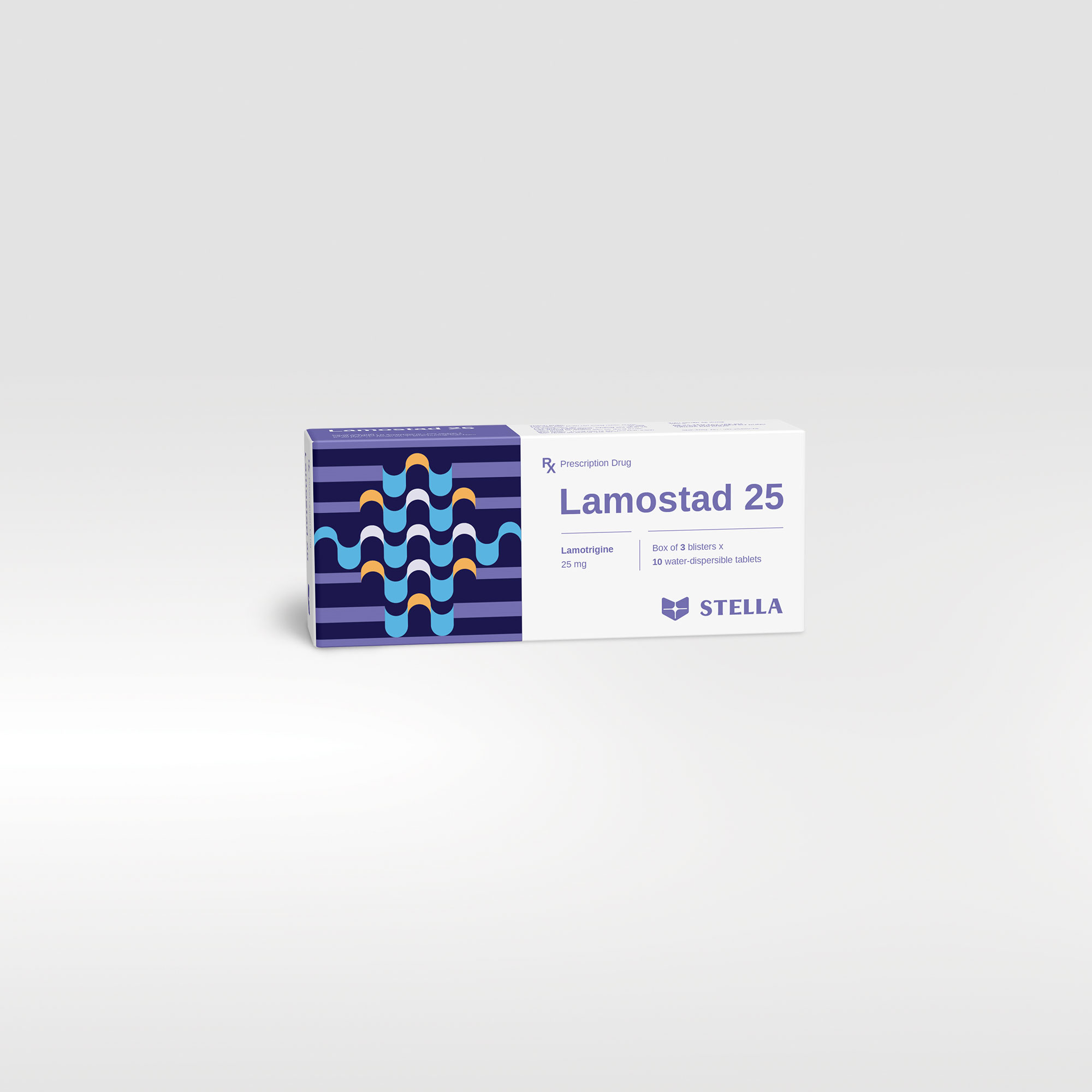Lamostad 25 Rx
Lamostad 25 is drug used for epilepsy treatment and prevention of depressive episodes in patients with bipolar disorder.
| Pack size | Box of 30 tablets |
| Shelf-life | 36 months |
| Composition | Lamotrigine |
| Dosage forms and strengths | Water-dispersible tablet: 25 mg |
Product code :






